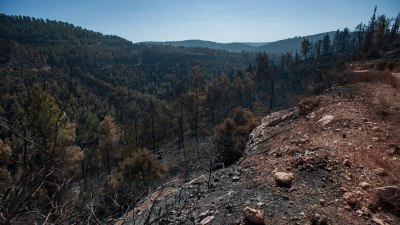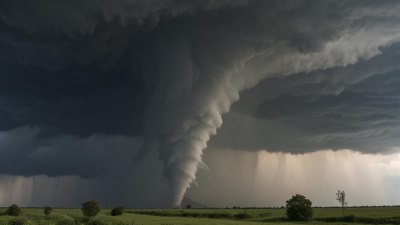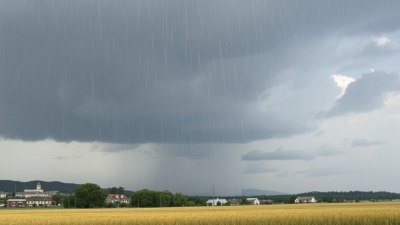How Earthquakes Can Create Sudden Weather-Like Phenomena
Explore the fascinating relationship between earthquakes and unusual weather phenomena, revealing the science behind these interactions.

Earthquakes are often perceived solely as seismic events that shake the ground beneath our feet, but their impact can extend far beyond just geological disruptions. In recent years, there has been increasing interest in understanding how earthquakes can trigger sudden weather-like phenomena. These events can include cloud formation, changes in atmospheric pressure, and even localized weather disturbances. Understanding this intricate relationship requires a look into the science of both seismology and meteorology.
The connection between earthquakes and weather phenomena can be attributed to several factors, including the release of energy during seismic events and the subsequent effects on the atmosphere. One of the primary mechanisms by which earthquakes influence weather is through the release of large amounts of energy, which can create shock waves that propagate through the Earth and into the atmosphere. These shock waves can cause changes in atmospheric pressure, which may trigger various weather patterns.
Seismic Activity and Atmospheric Changes
When an earthquake occurs, it releases seismic waves that travel through the Earth. These waves can cause the ground to shake violently, but they also affect the surrounding atmosphere. As seismic waves move through the Earth, they create vibrational energy that can lead to changes in temperature and pressure in the air above. This disturbance can, in turn, influence local weather conditions.
For instance, after a significant earthquake, changes in atmospheric pressure can lead to the formation of clouds. Studies have shown that the release of energy during an earthquake can cause localized increases in humidity, which may result in cloud development. This cloud formation can create precipitation in the affected areas, leading to sudden rain showers or, in some cases, even thunderstorms.
Electromagnetic Phenomena
In addition to pressure changes, earthquakes can also generate electromagnetic phenomena that may impact local weather systems. Researchers have discovered that the stress released during an earthquake can generate electromagnetic waves that interact with the ionosphere. This interaction can influence weather patterns, as disturbances in the ionosphere can affect radio signals and lead to alterations in cloud formation and precipitation.
Some scientists have proposed that these electromagnetic waves can cause changes in the air’s electrical properties, leading to increased ionization and the formation of charged particles in the atmosphere. These charged particles can then participate in cloud nucleation processes, promoting the formation of clouds and even the development of lightning during and after seismic events. Some studies have documented instances where increased lightning activity coincided with significant seismic events.
Volcanic Activity and Weather Phenomena
Another intriguing aspect of the relationship between earthquakes and weather phenomena involves volcanic activity. Many earthquakes are associated with volcanic eruptions, which can lead to dramatic changes in weather patterns. The ash and gases released during an eruption can have far-reaching atmospheric effects, influencing temperature, precipitation, and even the formation of clouds.
For example, large eruptions can inject volcanic ash and sulfur dioxide into the stratosphere. These particles can reflect sunlight, resulting in cooling effects in the upper atmosphere, while also affecting weather systems below. The interaction of volcanic ash with moisture in the air can lead to the formation of clouds that produce heavy rainfall or snow in regions far from the eruption site.
Case Studies of Earthquake-Induced Weather Patterns
To better understand how earthquakes can create sudden weather-like phenomena, we can look at several case studies that highlight these interactions. One notable example is the 2010 Haiti earthquake, during which researchers observed changes in local weather patterns shortly after the event occurred. Meteorological data indicated an increase in humidity and the development of clouds over the affected region, leading to brief but intense rain showers.
Another case study involves the 2008 Wenchuan earthquake in China. Following this seismic event, meteorologists reported unusual cloud formations and increased precipitation in the area surrounding the epicenter. Scientists linked these weather changes to the atmospheric disturbances caused by the earthquake, demonstrating the intricate relationship between seismic activity and local weather phenomena.
The Role of Climate Change
As our understanding of the interactions between earthquakes and weather continues to evolve, climate change has emerged as a significant factor influencing these processes. Rising global temperatures and changes in atmospheric conditions can enhance or alter the impact of seismic activity on weather patterns. For example, increased levels of humidity in the atmosphere can amplify the effects of seismic events, leading to more pronounced weather changes.
Moreover, as the climate continues to change, the frequency and intensity of earthquakes may also be affected. Some researchers are exploring any potential correlations between climate variations and tectonic activity, though this field of study remains largely speculative. Understanding these connections further requires integrated approaches that draw from geology, meteorology, and climate science.
Implications for Disaster Preparedness
Understanding the relationship between earthquakes and sudden weather phenomena has critical implications for disaster preparedness and response. As unusual weather patterns can arise following seismic events, communities in earthquake-prone regions need to be aware of the potential for rapid changes in weather conditions. This awareness can enable effective response strategies, particularly for emergency services that may need to adapt to sudden rainfall or localized storms.
Furthermore, integrating meteorological data with seismic monitoring systems can help create more comprehensive models for predicting the potential impact of earthquakes on local weather. By leveraging technology and improving communication between geologists and meteorologists, communities can better prepare for the multifaceted hazards that seismic events can present.
The interplay between earthquakes and sudden weather-like phenomena is a fascinating area of study that highlights the complex interconnections within our planet’s systems. While earthquakes are primarily geological phenomena, their aftermath can lead to significant changes in atmospheric conditions, influencing weather patterns in surprising ways. As research continues to uncover the nuances of this relationship, our understanding can enhance preparedness efforts and provide insights into the ongoing challenges posed by natural disasters.
As we move forward, it remains essential to continue exploring the connections between geological and meteorological phenomena, paving the way for a deeper comprehension of how these processes interact on a global scale. Our ability to adapt and respond to the impacts of earthquakes and their associated weather changes can ultimately lead to more resilient communities and a more profound understanding of our planet's intricate systems.











